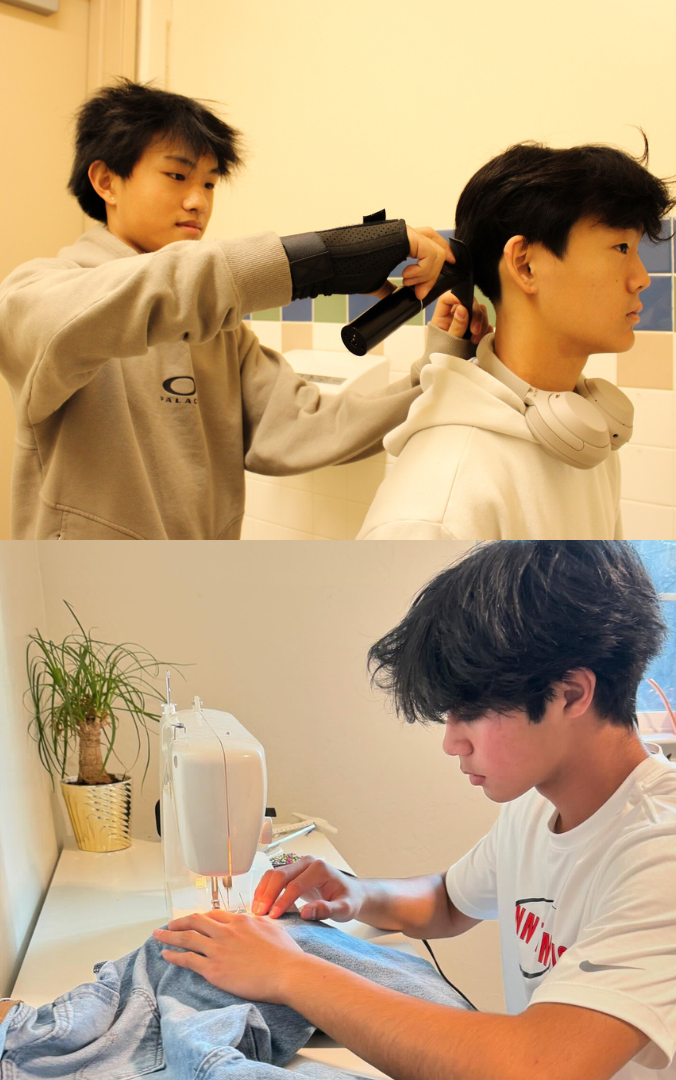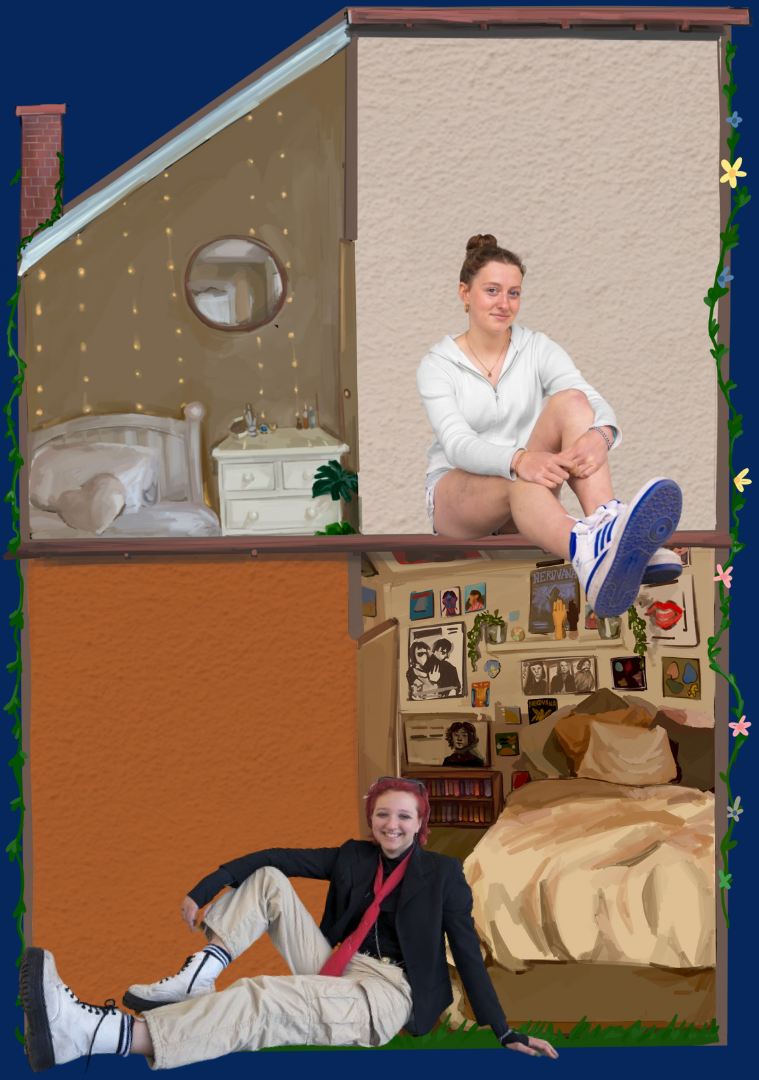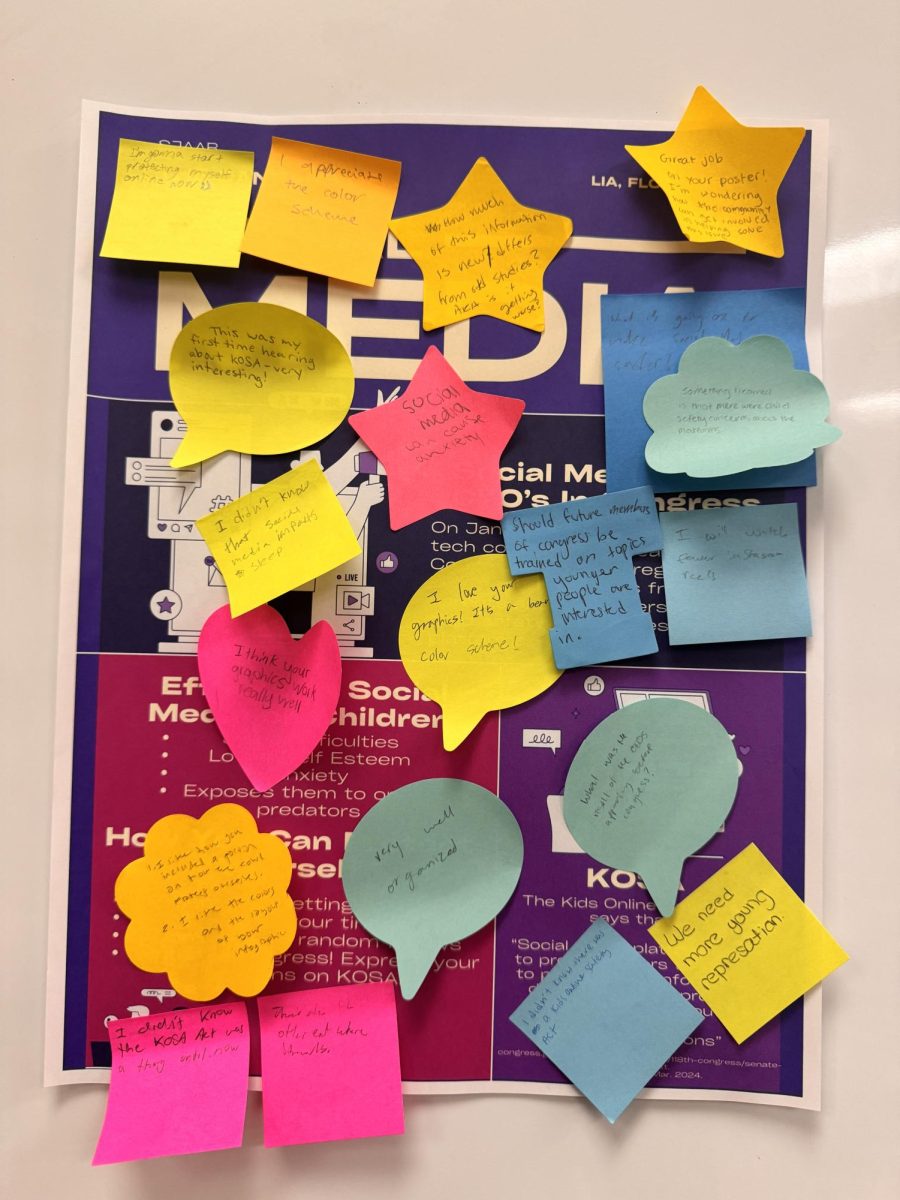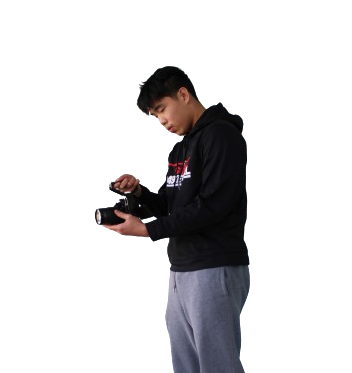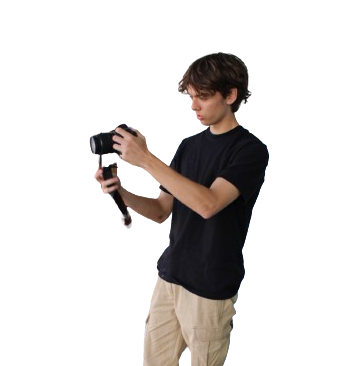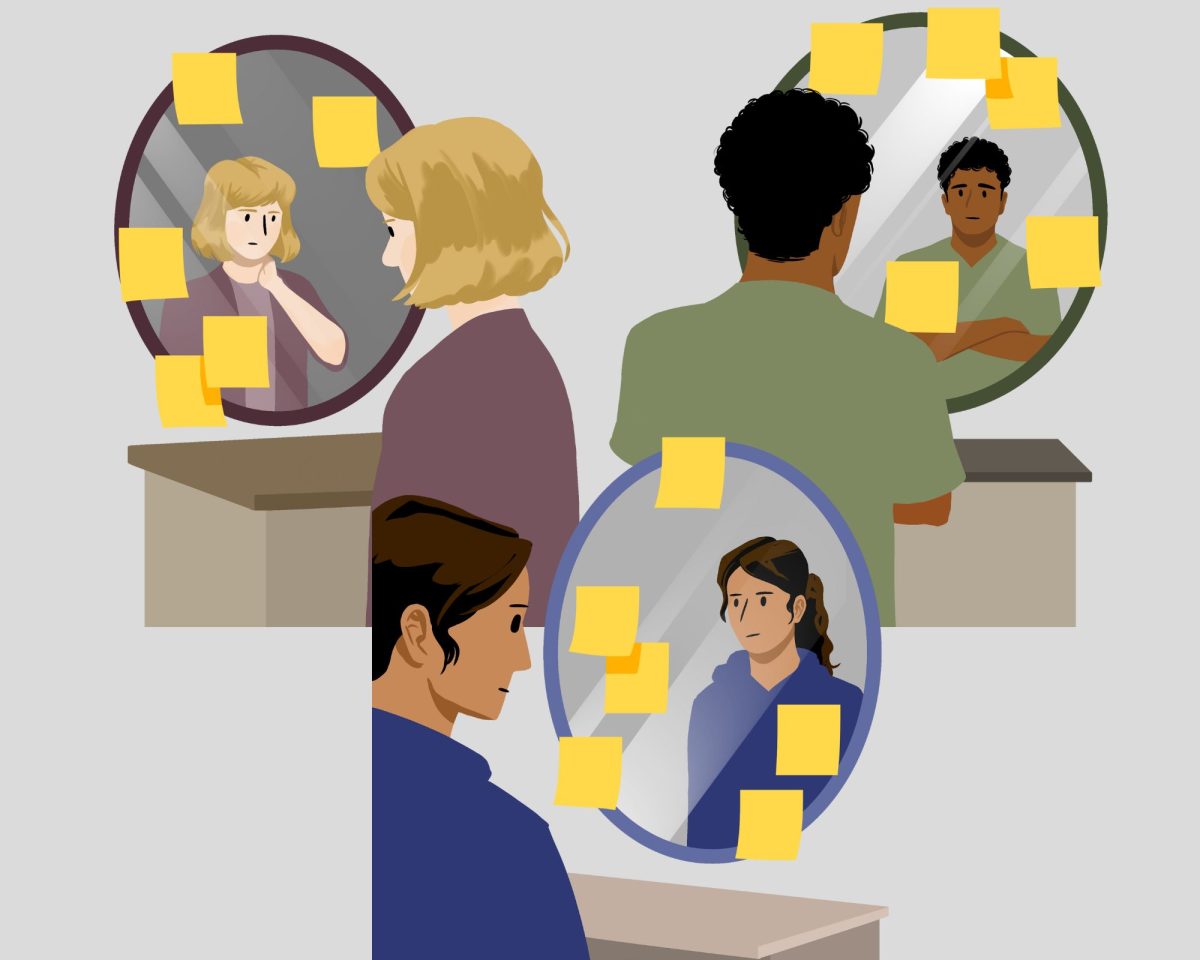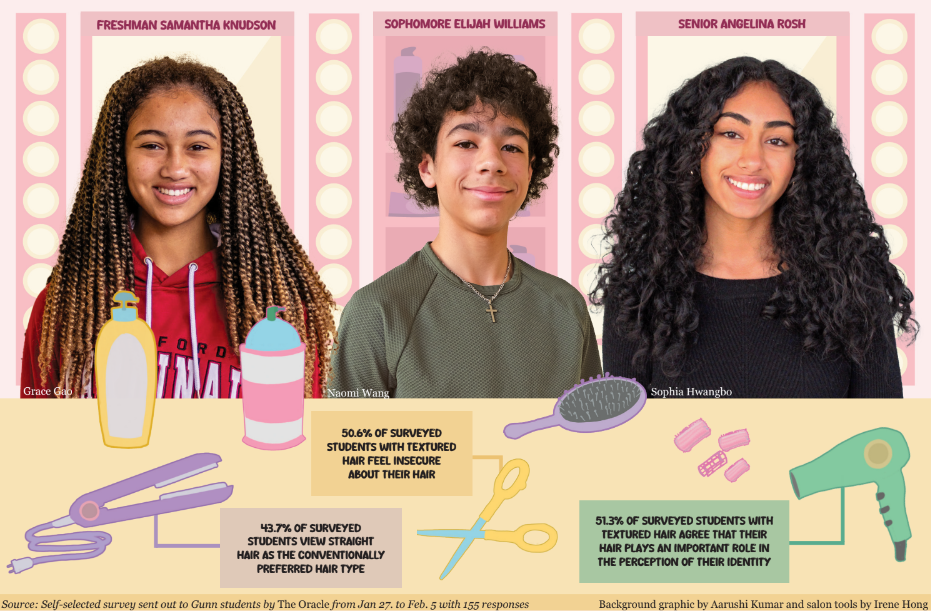Kickoff (Jan. 7):
By: Eileen Qian
Jan. 7 was no ordinary day for the Gunn Robotics Team (GRT). At 7 a.m., the GRT room was full of students, who were all awaiting the 2012 For Inspiration and Recognition of Science and Technology (FIRST) Kickoff and the announcement of this year’s game. Though the broadcast was delayed to 7:30 a.m., the energy in the room did not wane as students chattered away about the possible challenges ahead.
When the broadcast began, silence covered the room as everyone listened. Cheers broke out when the theme of the challenge was announced as Rebound Rumble. This year, the team is expected to build one complete robot that can play basketball against opposing robots on a field with barriers in the middle of the court. There are three rows of basketball hoops on each side of the field, two hoops in the middle row and one hoop in the top and bottom rows.
The goal is to score as many points as possible in two minutes and 15 seconds; shooting the balls into higher hoops results in more points. Each match begins with a 15 second period where the robots shoot independently without human control. There is also be a bonus round at the end of each match where the robots can earn extra points by shooting while balancing on elevated seesaws.
The team’s response to the theme was enthusiastic. “I think the challenge this year is exciting,” GRT supervisor Bill Dunbar said. “Even though some may think going over barriers is easy, it is actually a big challenge to play on a field that is not level.” Immediately, some students began relating aspects of this year’s challenge to those of previous years. “The concept of balancing is interesting and many people are excited to see that again,” senior Jaxon Welsh said.
However, problems arose with emerging ideas. “Most people stick to the first idea that they have, which can create arguments,” junior Max Woo. Despite the obstacles, junior Francesca Gencarella looked forward to working on the robot. “I am most excited for the trips and seeing the robot run after all the work,” she said.
GRT Team Leader Gregg Ratanaphanyarat hopes that the team learns a lot from the rigorous experience. “I want team members to work together and to learn about leadership, management, cooperation, design process and general knowledge of engineering,” he said.
Week 1 (Jan. 8-14):
By: Megan Cliff
After GRT learned of the theme of the game in kickoff, they entered the first week of build season, which was an important time for creating and testing the basic robot mechanisms.
One of the many challenges in this year’s competition was faced by senior Mechanism leader Alex Sutherland, who is head of the Transportation group. Presented with the challenge of enabling the robot to pick up balls off the ground and transporting them to the shooting mechanism, Sutherland faced a difficult task. “This specific mechanism actually just started a day or so ago,” Sutherland said. “Originally, we thought we could just go from the ‘ball-pick-up’ mechanism to the turret, but we realized that that’s not really feasible so we are behind.”
However, at Week 1, Sutherland believed that his group was catching up fast and said that he had high hopes for the weeks to come. “We will be able to have a small mechanism, one that utilizes few motors so that we can be light and well-integrated with other parts of the robot in order to make a clean transition,” he said.
Junior Christina Hu also faced challenges in her mini-group, which was delegated with the task of creating a trident prototype to balance the robot. “We are making it out of wood right now and some of the things don’t work together as they should,” Hu said. “Because we are a testing group our goals are shortened, so by tomorrow our goal is to finish the entire thing, mounting it up on one of the spots and testing out of it works and if it is necessary.”
Week 1 was a busy time for GRT members because finals week was quickly approaching. “Our progress has slowed down considerably,” Dunbar said. “If we don’t pick up the pace we are in danger of falling way behind schedule and not finishing on time.”
Week 2 (Jan. 15-21):
By: Utkash Dubey
With finals’ week at hand, GRT had some catching up to do of their own. Despite this, the turnout for build was more than satisfactory for Ratanaphanyarat. According to Ratanaphanyarat, “team members were very energetic and we had a good 30 to 40 people showing up everyday. Generally, progress and energy went up.”
By the end of Week 2, GRT had finished prototyping different mechanisms, as well as proving the validity of their concepts. In essence, GRT was ready to create the metal components and integrate all the mechanisms with a main frame. Ratanaphanyarat hoped GRT would be able to get a working robot by the following week. “We will have a robot that could play the game well, although it will not be our final robot,” he said.
During Week 2, the Drive Train group played an important part. “Drive Train is the wheels of the robot,” junior Drive Train group leader Joey Milia said. “It can be [said that] it’s the most important part of the bot; [even] without mechanisms the bot can still drive around and play defense.”
Pertaining to this year’s challenge, Milia feels this game is considerably different than those of previous years: “The main challenge for drive train is the four-by-six inch rectangular barrier in the center of the field,” Milia said. “We have to be able to reliably cross it quickly—this was impossible to do with the base we made in the beginning of the year, which had only an inch of ground clearance.”
Week 3 (Jan. 22-28):
By: Lydia Zhang
The work progressed smoothly during the third week of GRT’s build season. “Right now we’re doing pretty [well], and the energy level is really high,” Ratanaphanyarat said. “A lot of our deadlines are pretty ambitious, and we’ve already missed a few, but we’re trying to catch up right now.”
The team spent the week working on their “beta bot,” which is one robot that GRT creates for the competition. “The beta bot is the stage after prototyping,” Ratanaphanyarat said. “This is the first time that we’re going to have an actual robot that can move around and play the game, but it’s not our final robot.”
Though Ratanaphanyarat says that deadlines went by quickly, the team finished the beta bot structure on time. “As of now, our robot group can play the game pretty well,” he said. “Everyone is working really well together right now.”
Senior Delia Gratta, the leader of the Structures and Integration group, was satisfied with the team’s progress. “I was happy that the beta bot’s structure was all welded fairly early on, and I was able to put together what I could,” she said. “The welders did a very good job in welding it quickly.”
As a member in the Structures and Integration group, Gratta worked with other GRT groups to gather all components and put them together to form a working robot.
According to Gratta, her group can also be considered the “architects” of the team. “I try and fit every mechanism and each group into the robot and make the integration and the transition between each component as seamless as possible,” Gratta said.
Gratta says that the Structures team did not have many issues during Week 3. “[We] haven’t had any major problems, though integration is always a little bit of a challenge because every group is not going to be at the same point in their design process,” she said. “The main issue is getting everyone on the same page.”
Junior Andrew Gerber-Duffy says that the Controls team, which worked on the electronics and planning of the robot, also did well. “There were some difficulties implementing the controls systems for the mechanisms, but we’re working on that now and things are looking pretty good,” he said. “We’re on track, [and] I think we definitely have a strong possibility of meeting our deadlines.”
According to Gerber-Duffy, the atmosphere at GRT really improved after finals. “There are a lot more people showing up now than there were in the previous few weeks,” he said. “Since we’re right in the middle of the season, things are getting pretty intense.”
Week 4 (Jan. 29 – Feb. 3)
By: Anna Qin
As the deadline for competition slowly creeped in, Week 4 of GRT build season saw the completion of the computer-aided design of their robot and the finalization of various mechanisms for the metal components on their first robot, the beta bot.
According to Ratanaphanyarat, efforts in the past week have been successful. “Our team is communicating very well,” he said. “And although we’re behind schedule, we always say we are so we can get the work done.” Finalizing certain mechanisms in the robot seemed to be the focus of Week 4. “We are making the final parts for our wedge and shooter mechanisms already,” senior Phillippe Napaa said.
However, certain parts have been giving the team difficulties. “The front part of the beta-bot has been giving us a lot of trouble and we’ve been having problems with the integration of specific mechanisms,” Ratanaphanyarat said.
Napaa raised similar concerns over issues with the “ball pick-up” mechanism, which is an essential mechanism to the game robot. “It’s been redesigned two to three times and it still hasn’t been finalized,” he said. “We’re still testing so hopefully it can be confirmed soon.”
In the week to come, Ratanaphanyarat hopes for the general completion of their beta-bot. “Our goal is to finish building the main frame and fix issues concerning the mechanisms that haven’t been finalized,” he said.
Since the team has two robots, the beta bot for drive test practice and the omega bot for the final competition, it will need to have both done by the end of build season, Week 6. Ratanaphanyarat is confident that they will make the deadline. “We will have both robots finished at the same time,” he said.


